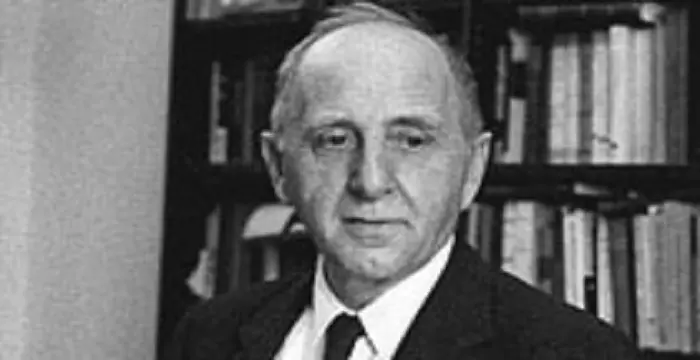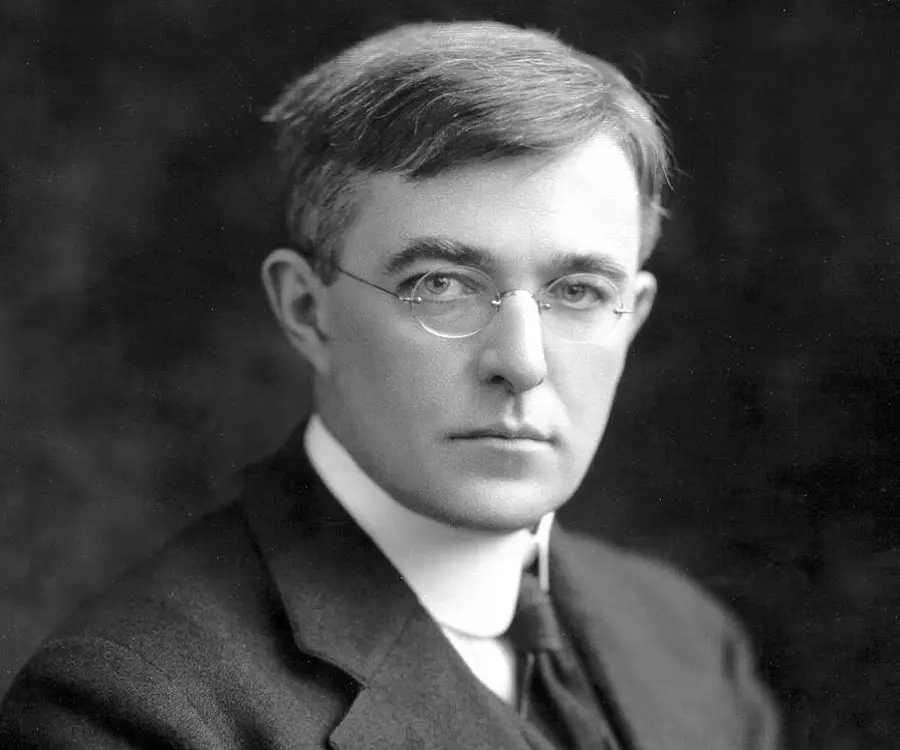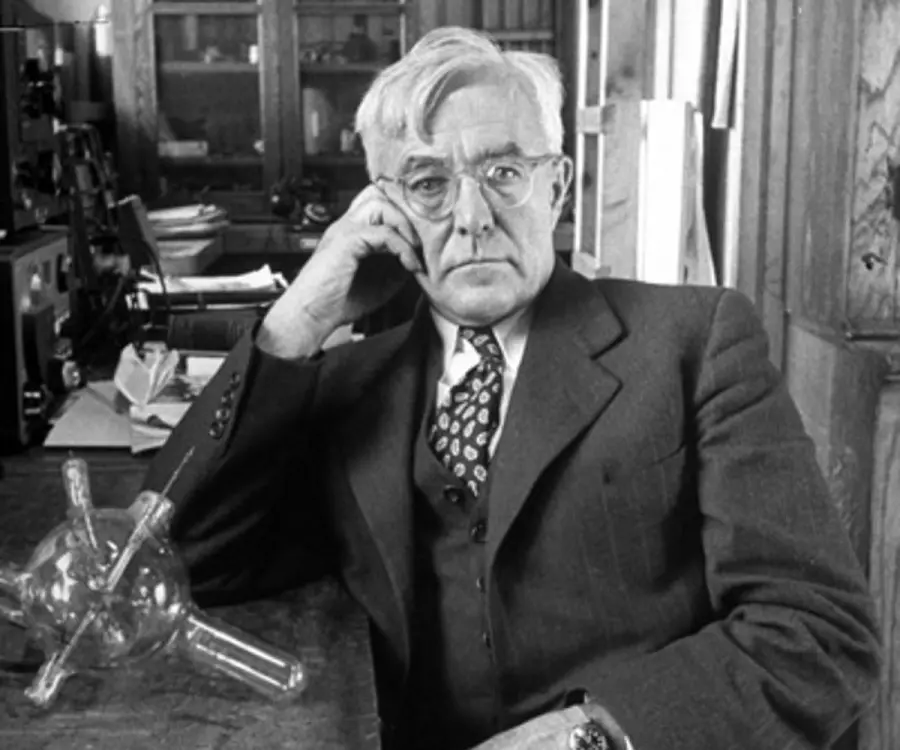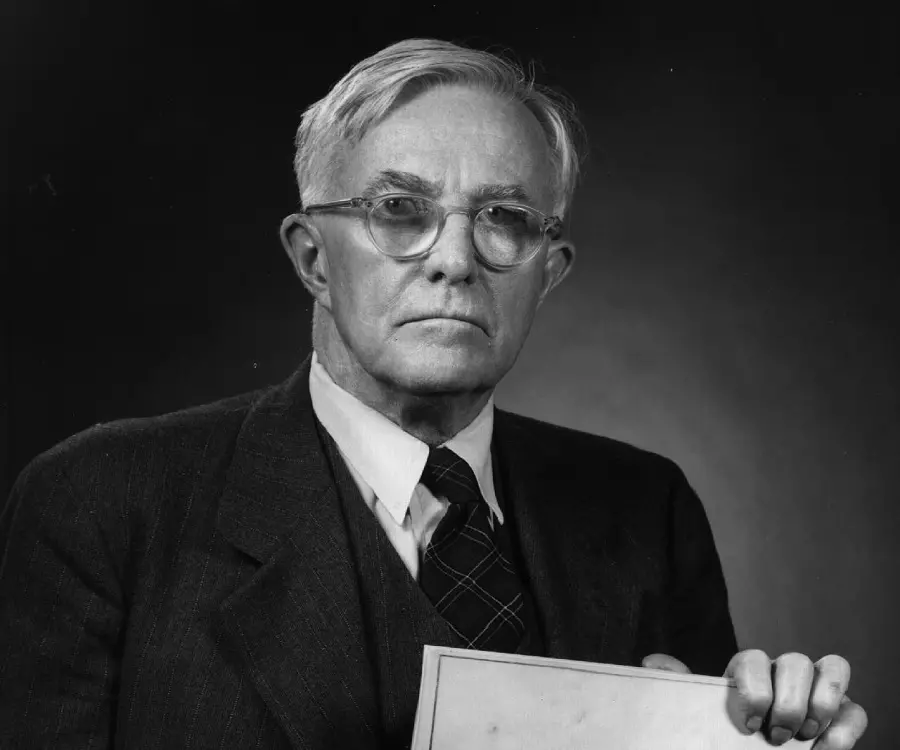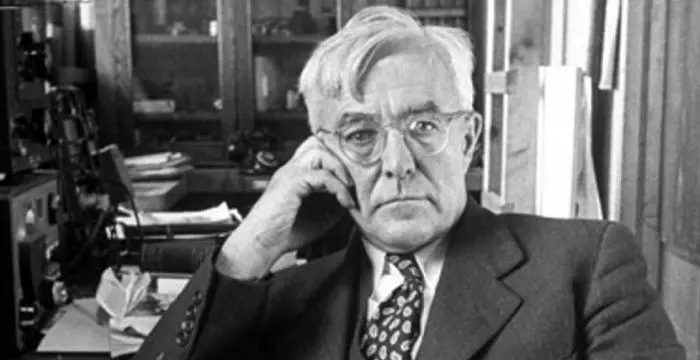
Irving Langmuir - Scientists, Career and Childhood
Irving Langmuir's Personal Details
Irving Langmuir was an American chemist who won the 1932 Nobel Prize in Chemistry for his work in surface chemistry
| Information | Detail |
|---|---|
| Birthday | January 31, 1881 |
| Died on | August 16, 1957 |
| Nationality | American |
| Famous | Columbia University, Scientists, Chemists |
| Hobbies | Mountaineering, Classical music, Piloting his own plane, Skiing |
| Universities |
|
| Notable Alumnis |
|
| Birth Place | Brooklyn |
| Gender | Male |
| Sun Sign | Aquarius |
| Born in | Brooklyn |
| Famous as | Chemist |
| Died at Age | 76 |
// Famous Columbia University
Helen Morris
Helen Morris is a former book editor, TV producer and the wife of Academy Award winning director Martin Scorsese. Check out this biography to know about her birthday, childhood, family life, achievements and fun facts about her.
Simon Kuznets
Simon Kuznets was a noted Russian-American economist, statistician, demographer, and economic historian. Check out this biography to know about his childhood, family life, achievements and other facts related to his life.
Anna Paquin
Anna Paquin is a Kiwi film, theatre and television actress known for her roles in movies like ‘The Piano’, ‘Fly Away Home’, and ‘X-Men. This biography provides detailed information about her childhood, life, achievements, works & timeline.
Irving Langmuir's photo
Who is Irving Langmuir?
Irving Langmuir was an American chemist and physicist who won the 1932 Nobel Prize in Chemistry for his work in surface chemistry, becoming the first industrial chemist to receive this honor. Though his research was primarily focused on surface chemistry, he was also famous for his works in other scientific areas like atomic structure, surface phenomena in a vacuum, atmospheric science, and chemical reactions, thermal effects, and electrical discharges in gases. He is also credited to have popularized Gilbert N. Lewis's cubical atom theory and Walther Kossel's chemical bonding theory through his well known article ‘The Arrangement of Electrons in Atoms and Molecules.’ Born as the son of inquisitive, nature loving parents, he was encouraged to be curious and observant from a young age. An intelligent boy, he performed well in school and graduated with a Bachelor of Science degree in metallurgical engineering (Met.E.) from the Columbia University School of Mines. He began working at the General Electric research laboratory after completing his doctorate and made many valuable contributions to the development of incandescent light bulbs. He also investigated thermionic emission and further research in the field ultimately led to the invention of a fast and efficient vacuum pump.
// Famous Chemists
Henry Cavendish
Henry Cavendish was a theoretical chemist and physicist, renowned for discovery of hydrogen and calculation of the mass of earth. To know more about his childhood, profile, timeline and career read on
Walter Kohn
Nobel Laureate Walter Kohn was an Austrian-born American theoretical chemist and physicist. Check out this biography to know about his childhood, life, achievements, works & timeline.
Jabir Ibn Hayyan
Jabir Ibn Hayyan was a medieval era polymath. Check out this biography to know about his life, works and achievements.
Childhood & Early Life
Irving Langmuir was born on January 31, 1881, in Brooklyn, New York, as the third of the four children of Charles Langmuir and Sadie, née Comings. His father was an insurance executive.
Both his parents encouraged their children to be curious about their surroundings and advised them to carefully observe nature. Irving received his early education from various schools and institutes in America and Paris.
As a student, he developed an interest in chemistry, physics, and mathematics. He graduated high school from Chestnut Hill Academy in 1898.
His elder brother Arthur was a research chemist and was an early influence on young Irving. Arthur encouraged his brother’s scientific pursuits and helped him set up his first chemistry lab in the corner of his bedroom.
Irving went on to earn a Bachelor of Science degree in metallurgical engineering (Met.E.) from the Columbia University School of Mines in 1903. He then studied under Nobel laureate Walther Nernst at the University of Göttingen in Germany.
His dissertation focused on the dissociation of gases near a hot platinum wire and he was awarded a doctorate in 1906. During this time he was greatly influenced by Nernst and the mathematician Felix Klein.
Career
Irving Langmuir began teaching at the Stevens Institute of Technology in Hoboken, New Jersey, a job he held until 1909. Later that year he took up a position at the General Electric research laboratory (Schenectady, New York), where he eventually became Associate Director.
During this time, improving the early tungsten-filament incandescent light bulbs was one of the ongoing projects at the research lab. The glass envelops of these bulbs blackened over time and the tungsten filaments were relatively short-lived.
Langmuir began his investigations and discovered that the blackening of the bulbs resulted from the deposition of tungsten that evaporated from the hot filament. He came up with an improved design for the tungsten filament, which eventually led to a better and commercially successful incandescent bulb.
He also studied gases, and did significant research on hydrogen which led to the development of an atomic hydrogen welding torch. His investigation of thermionic emission—the ejection of electrons from a heated surface—resulted in the invention of a fast and efficient vacuum pump.
In the 1910s he published a series of important papers on the adsorption, condensation, and evaporation of gas molecules at solid surfaces and on the arrangements of molecules in the surface layers of liquids.
In 1917, he published a paper on the chemistry of oil films, and in 1919 an article ‘The Arrangement of Electrons in Atoms and Molecules’ in which he built upon Gilbert N. Lewis's cubical atom theory and Walther Kossel's chemical bonding theory to outline his "concentric theory of atomic structure."
In 1924, he introduced the concept of electron temperature and invented what is now called a Langmuir probe, an electrostatic probe for measuring both temperature and density which is commonly used in plasma physics.
Working along with Katharine B. Blodgett, he studied thin films and surface adsorption. The duo introduced the concept of a monolayer and the two-dimensional physics which describe such a surface.
In the late 1930s, he shifted his focus to atmospheric science and meteorology. Following his observations of windrows of drifting seaweed in the Sargasso Sea, he discovered a wind-driven surface circulation in the sea which is now called the Langmuir circulation.
Having spent several years at GE, he retired in 1950 but continued as a consultant until his death.
Major Work
Irving Langmuir developed the first true vacuum triodes at the General Electric research laboratory in 1915. The earliest vacuum tubes strongly resembled incandescent light bulbs, and the development of the diffusion pump and improvements made by Langmuir led to the development of high-vacuum tubes.
Awards & Achievements
The Perkin Medal, considered the highest honor given in the US chemical industry, was bestowed upon him in 1928.
In 1932, Irving Langmuir was awarded the Nobel Prize in Chemistry "for his discoveries and investigations in surface chemistry".
In 1934, he became the recipient of the Franklin Medal, the most prestigious of the various awards presented by the Franklin Institute, for his contribution to chemistry.
Personal Life & Legacy
He married Marion Mersereau in 1912. They couple adopted two children, Kenneth and Barbara.
He was an avid outdoorsman whose hobbies included hiking, mountain climbing, skiing, swimming, and boating. Always open to new experiences, he learned to pilot a plane at age 49.
He endured a brief illness before dying of a heart attack on August 16, 1957. He was 76.
// Famous Scientists
Juliane Koepcke
Juliane Koepcke is a German-Peruvian biologist, who was the lone survivor among the 92 passengers and crew of the ill-fated LANSA Flight 508 that crashed in the Peruvian rainforest on 24 December 1971. Know more about her life in this biography.
Henry Cavendish
Henry Cavendish was a theoretical chemist and physicist, renowned for discovery of hydrogen and calculation of the mass of earth. To know more about his childhood, profile, timeline and career read on
Konstantin Tsiolkovsky
Konstantin Tsiolkovsky was a Russian rocket scientist and a pioneer of astronautics. This biography provides detailed information about his childhood, family, personal life, career, achievements, etc.
Irving Langmuir's awards
| Year | Name | Award |
|---|---|---|
Other | ||
| 0 | Franklin Medal | |
| 1937 | John Scott Legacy Medal and Premium | |
| 1928 | Perkin Medal | |
| 1944 | Faraday Medal | |
| 1950 | John J. Carty Award for the Advancement of Science | |
| 0 | 1932 - Nobel Prize in Chemistry | |
| 0 | 1918 - Hughes Medal | |
| 0 | 1920 - Rumford Prize | |
Irving Langmuir biography timelines
- // 31st Jan 1881Irving Langmuir was born on January 31, 1881, in Brooklyn, New York, as the third of the four children of Charles Langmuir and Sadie, née Comings. His father was an insurance executive.
- // 1898As a student, he developed an interest in chemistry, physics, and mathematics. He graduated high school from Chestnut Hill Academy in 1898.
- // 1903Irving went on to earn a Bachelor of Science degree in metallurgical engineering (Met.E.) from the Columbia University School of Mines in 1903. He then studied under Nobel laureate Walther Nernst at the University of Göttingen in Germany.
- // 1906His dissertation focused on the dissociation of gases near a hot platinum wire and he was awarded a doctorate in 1906. During this time he was greatly influenced by Nernst and the mathematician Felix Klein.
- // 1909Irving Langmuir began teaching at the Stevens Institute of Technology in Hoboken, New Jersey, a job he held until 1909. Later that year he took up a position at the General Electric research laboratory (Schenectady, New York), where he eventually became Associate Director.
- // 1912He married Marion Mersereau in 1912. They couple adopted two children, Kenneth and Barbara.
- // 1915Irving Langmuir developed the first true vacuum triodes at the General Electric research laboratory in 1915. The earliest vacuum tubes strongly resembled incandescent light bulbs, and the development of the diffusion pump and improvements made by Langmuir led to the development of high-vacuum tubes.
- // 1917 To 1919In 1917, he published a paper on the chemistry of oil films, and in 1919 an article ‘The Arrangement of Electrons in Atoms and Molecules’ in which he built upon Gilbert N. Lewis's cubical atom theory and Walther Kossel's chemical bonding theory to outline his "concentric theory of atomic structure."
- // 1924In 1924, he introduced the concept of electron temperature and invented what is now called a Langmuir probe, an electrostatic probe for measuring both temperature and density which is commonly used in plasma physics.
- // 1928The Perkin Medal, considered the highest honor given in the US chemical industry, was bestowed upon him in 1928.
- // 1932In 1932, Irving Langmuir was awarded the Nobel Prize in Chemistry "for his discoveries and investigations in surface chemistry".
- // 1934In 1934, he became the recipient of the Franklin Medal, the most prestigious of the various awards presented by the Franklin Institute, for his contribution to chemistry.
- // 1950Having spent several years at GE, he retired in 1950 but continued as a consultant until his death.
- // 16th Aug 1957He endured a brief illness before dying of a heart attack on August 16, 1957. He was 76.
// Famous American peoples
Wentworth Miller
Wentworth Miller is an American actor and screenwriter who achieved recognition for his role in the TV series ‘Prison Break’.
Jason Simpson
Jason Simpson is the son of former NFL running back, broadcaster and actor O. J. Simpson. Check out this biography to know about his childhood, family, life, and little known facts about him.
Melissa Brim
Melissa Brim is the ex-girlfriend of former professional boxer Floyd Mayweather Jr. Check out this biography to know about her birthday, childhood, family life, achievements and fun facts about her.
Skai Jackson
Skai Jackson is an American child actress with huge fan following. Find more about her family & personal life, relationships, facts and more.
Joyce Meyer
Joyce Meyer is a Christian author and speaker. This biography provides detailed information about her childhood, life, achievements, works & timeline
Zoe LaVerne
Zoe LaVerne is an American musical.ly star. Check out this biography to know more about her family, personal life, including her age, birthday, etc.
Irving Langmuir's FAQ
What is Irving Langmuir birthday?
Irving Langmuir was born at 1881-01-31
When was Irving Langmuir died?
Irving Langmuir was died at 1957-08-16
Where was Irving Langmuir died?
Irving Langmuir was died in Woods Hole
Which age was Irving Langmuir died?
Irving Langmuir was died at age 76
Where is Irving Langmuir's birth place?
Irving Langmuir was born in Brooklyn
What is Irving Langmuir nationalities?
Irving Langmuir's nationalities is American
What is Irving Langmuir hobbies?
Irving Langmuir's hobbies is Mountaineering, Classical music, Piloting his own plane, Skiing
What was Irving Langmuir universities?
Irving Langmuir studied at Columbia University, Columbia University, University of Göttingen, Columbia University School of Engineering and Applied Science, Chestnut Hill Academy
What was Irving Langmuir notable alumnis?
Irving Langmuir's notable alumnis is Columbia University
What is Irving Langmuir's sun sign?
Irving Langmuir is Aquarius
How famous is Irving Langmuir?
Irving Langmuir is famouse as Chemist

